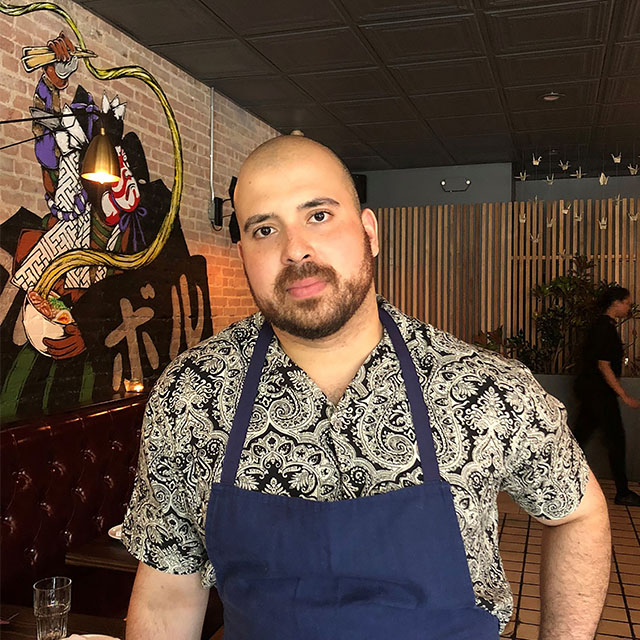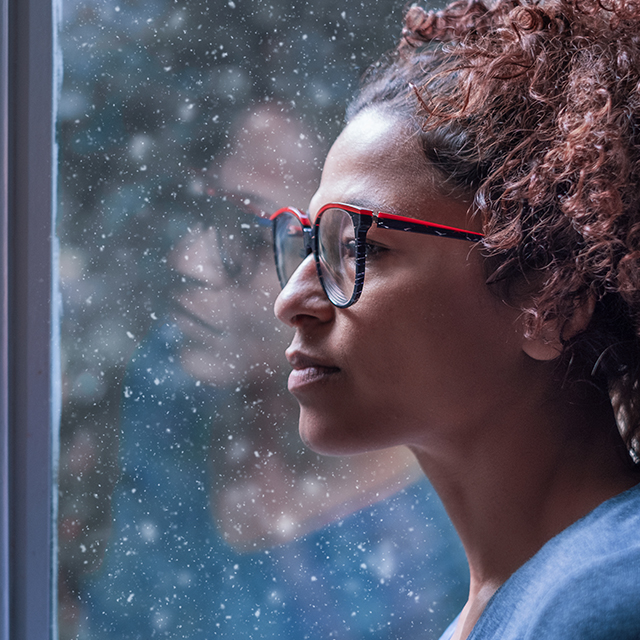It’s 11 a.m., and Christelle Asu is walking the halls of Nelson 5, an N95 respirator tight on her face. She’s four hours into her 12-hour shift, and she will log close to 10,000 steps on her fitness tracker by the time she clocks out.
Asu, a Nelson 5 nurse for six years, has been treating patients with COVID-19 since March. So far, the unit had admitted 466 patients with the disease, and placed 80 on ventilators. Thirty-seven have died.
The new assignment was frightening at first, when so little was known about how to treat COVID-19 and how to avoid infection. Yet Asu didn’t hesitate, even though her type 1 diabetes increased her risk of serious harm from the coronavirus.
“I was like other nurses in thinking this is my duty, I want to help,” she says. “I just felt like I was doing my part. I went into it feeling strong and feeling confident that we would get through it soon.”
Grateful people around the world celebrated front-line health care workers like Asu. They clapped and cheered from windows and balconies, organized car parades, donated meals. In May, the Blue Angels flew in formation over Baltimore and Washington, D.C.
As 2020 draws to a close, the attention is gone while the grinding, unglamorous work remains. “There’s a small sense of feeling almost forgotten about,” Asu says.
By now, she’s used to the hassles of wearing personal protective equipment, the fears for her own safety, the sorrow of caring for patients who are frightened and alone.
With recent announcements that vaccines are coming, there’s a new feeling that the end is in sight. But Asu and others who have been treating patients with COVID-19 all along know the next few months will be difficult as case numbers will likely continue to surge.
Working in a COVID-19 unit means toiling in multiple layers of isolation, robbed of many of the social interactions that make nursing meaningful. Asu and the other Nelson 5 clinicians are hidden by respirators and face shields or PAPR (powered air-purifying respirator) hoods, and walled off from the rest of the hospital in a special air-handling hospital unit.
The old satisfactions of getting to know patients and their families, enjoying a lunchtime laugh with colleagues and even leaving work behind for a social evening in a crowded restaurant are distant memories as the pandemic grinds on.
Asu, who lives alone in Baltimore, sees her family only rarely. She didn’t spend Thanksgiving with her parents, even though they live just an hour away. “I just have a fear of not keeping them safe,” she says, “especially since my grandmother lives with them.”
Nelson 5 used to bustle with hospital personnel who emptied trash bins, sorted and stored medications, or delivered meals to patients. Now, fewer people enter the unit, and some of those jobs fall to the Nelson 5 nurses. “It’s definitely put extra things on us that nurses didn’t used to do,” Asu says.
The unit, with 55 nurses and 21 beds, has had no staff turnover since spring, says nurse manager Lara Street. The nurses have grown closer to one another in the months since Nelson 5 became one of the first units at The Johns Hopkins Hospital to convert to COVID-19 care.
“This experience would have been 10 times worse without my Nelson 5 team,” says Asu.
Her Dream Job
Asu, who grew up in Prince George’s County, started working in Nelson 5 right after graduating from Towson University. She had wanted to be a nurse since her childhood diabetes diagnosis. “I was 10 and scared, and these people came in with smiles and made me feel better,” she says. “I wanted to help people like those nurses helped me.”
Pre-COVID-19, Nelson 5 was her ideal assignment, a medical progressive care unit where she treated patients with a range of ailments and injuries requiring anything from moderate to intensive levels of care. “I didn’t want to specialize,” says Asu. “I wanted to do a little bit of everything.”
She got to know patients, and grew adept at reading their symptoms. “The biggest thing I learned over the years is how to identify a patient who is about to get much worse,” she says. If they were bad enough, she worked with the care team to transfer them to intensive care.
Now, the sickest patients stay. “We became an intensive care unit,” says Asu. “If a patient goes into respiratory failure, we are keeping them, sedating and managing them. That was new to us.”
To contain the virus, the hospital’s facilities staff converted the unit’s air flow system to negative pressure and constructed a room where clinicians can put on and take off their protective gear. Asu and other nurses were fitted with N95 respirators and given extensive training on how and when to wear the respirators, face shields, gloves, gowns and PAPRs.
“I remember going through that process and being like, ‘Oh my gosh, I have to do this every time I see a patient,’” says Asu. Leaving the unit, even for a bathroom break, is complicated. “It’s all the little things you used to be able to do, like eating popcorn at the nurse’s station, or getting a drink of water without having to take all your gear off,” she says.
On this particular day, Asu is a charge nurse and is not assigned to specific patients. She meets with the other nurses to discuss which patients are leaving and how many might arrive. She checks supplies, and orders a dialysis machine for a patient whose kidneys were damaged by COVID-19.
A nurse pokes her head out of a patient room and asks Asu to give her some lancets so she can check the blood sugar level of a patient with diabetes.
Asu slathers sanitizer over her hands, stretches blue medical gloves over them, slips on a second pair of gloves, and grabs the needles and passes them through the open door. She repeats the ritual in reverse to take off the gloves. The effort saves her colleague from an even more elaborate donning and doffing process.
She looks at a monitor that shows the blood pressure, oxygen level and heart rate of all 18 patients. She sees a rare moment of stability: Three patients are in intensive care, a relatively low number that reflects better available treatments since the early days of the pandemic, including the use of high-flow oxygen instead of mechanical ventilation when possible.
Meanwhile, Asu switches every few hours between an N95 so snug it leaves marks and a bulky, uncomfortable PAPR. The PAPR’s battery pack, which sits at the small of her back and seems to grow heavier as the hours pass, delivers a whoosh of air into the hood that covers her head, making it tough to hear patients and colleagues.
Finding Balance
Resident chaplain Andreas Andreou offers spiritual support to staff members, patients and their families. “If you walk into the unit and you see the staff, you think they’re doing great. They have a strong spirit — they do their work and joke around. But they tell me when they leave at the end of the day, they get into their car and break down. Or they cry when they get home.”
He urges staff members to celebrate moments of joy, such as when a patient recovers enough to leave. “At the heart of my work as chaplain in supporting staff is to remind them that life is bigger than COVID,” he says. “I urge them to connect to whatever speaks to them, to the beauty and sacredness of everyday life.”
Asu’s only vacation since the pandemic started was a long weekend during the summer with a few of her fellow nurses. “We took a road trip to a cabin in the woods, and just relaxed and ate s’mores,” she says.
She took up archery, buying her own target so she could practice in COVID-19-safe outdoor isolation. “Something about perfecting the accuracy, speed and skill of shooting an arrow into a target was so appealing,” she says. “Before COVID, after a hard day of work, I’d go out with friends. Now, I’m using this opportunity to try random hobbies I’ve always been interested in.”
As she stretches back the string on her bow and squints at the target, the weariness and strain of caring for COVID-19 patients falls away.
“The pandemic came out of nowhere,” she says. “Initially, it was frustrating, but only because nothing was figured out. When we finally got a routine and things were more stabilized, the question then became, when is this going to end?”



